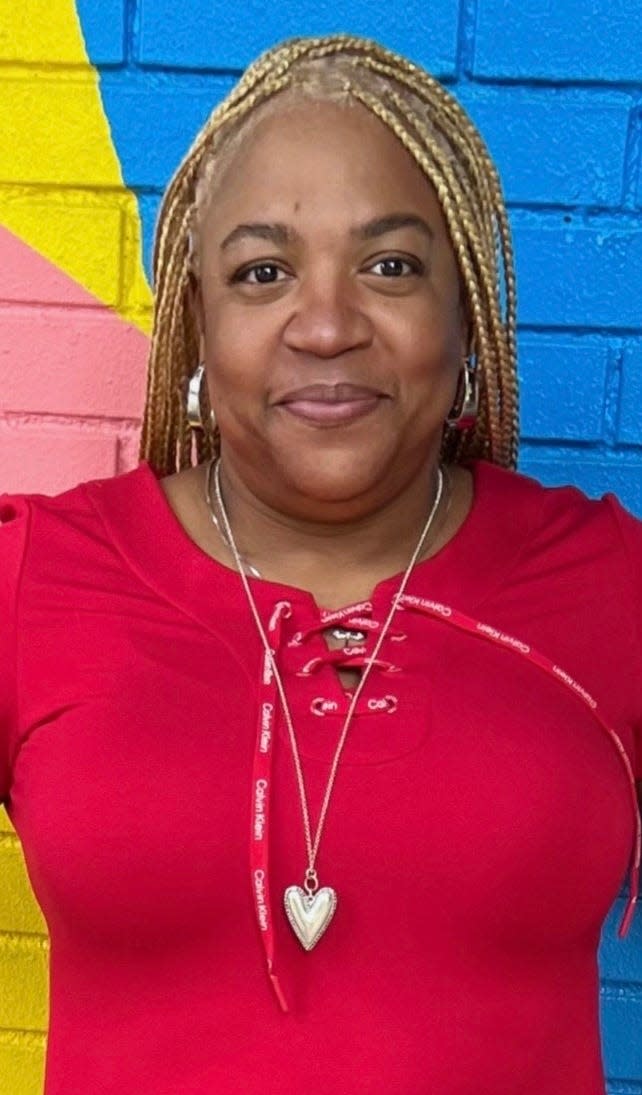Some who took out parent PLUS loans to send their kids to college expect to die with debt
Around 2015, when it was time for Kimara Shields’ daughter Ashante to decide what to do after high school, Shields didn’t hesitate: The teenager, she was sure, would go to college, especially considering a degree would be essential to her plans to become a teacher. Her daughter had always wanted to attend college too.
Shields and her husband Damon, who live in Baltimore County, Maryland, are a wound care technician and telecommunications technician, respectively. As with many working-class couples across the country, their incomes cover the basic needs of their household but little else. Yet the aid Ashante received to attend Stevenson University, a local private four-year university, covered only a snippet of the full cost of attendance.
One of them would have to go into debt to afford the rest.
So Shields, 46, took out what’s known as a parent PLUS loan. Again, she did it without hesitation: Just as she was adamant Ashante would go off to college, Shields was sure this was their only option for making that path a possibility.
“I wanted to help her go to college and not come out with too much debt, so I opted to take the loans myself for her, to take the brunt of them,” Shields said. Ashante graduated and is now launching her career as an educator, working to pay off $20,000 in federal undergraduate debt she did end up borrowing herself. Shields, meanwhile, is grappling with parent PLUS debt that has snowballed to $155,000, much of it interest.
Now that a COVID-19-era pause on federal student loan payments is over, Shields finds herself with a monthly bill that rivals her mortgage. “I have no problem paying the loan – that's my debt, and I have no problem doing it,” Shields said. “But $1,038 a month is not something that I can afford to pay off.”
She was asked little about what she could afford when she took out the loan in the first place.

Along with millions of Americans, Shields took out a parent PLUS loan convinced it was the only way to fill the gap between federal grants, assistance from Ashante’s college and the total bill for her daughter to attend Stevenson. Over the past few decades, colleges, especially expensive private schools, have increasingly suggested these loans as a means of financing.
The country’s total parent PLUS debt amounts to more than $104 billion, more than $29,000 per borrower on average and often a lot more. Roughly 1 out of every 4 federal dollars lent for undergraduate education goes to parents.
“Parent PLUS loans don’t get a lot of attention,” said Chris Keaveney, the founder and CEO of Meritize, which provides education loans based on students’ academic, work, or military achievements. “There’s no doubt that a significant portion of folks nearing retirement age with significant student debt are parent PLUS borrowers. And that’s a storyline that probably hasn’t been done justice in all the conversations around student loan forgiveness.”
Black, working-class families resort to parent PLUS
Parent PLUS loans were created in the 1980s for high-income parents who didn’t have enough liquid cash to cover their kids’ tuition in a single lump-sum payment. But with the rising costs of college and relatively stagnant higher education funding and financial aid – combined with changes to the law including the elimination of a borrowing cap – the option has become popular among low-income parents of color. Black families, however, earn about half of what white families do.
For Shields, taking out a parent PLUS loan at first felt like she was giving her daughter a key to the American Dream. “You don’t want them to come out with debt. You want to give them a better life,” she said. “But what is the American Dream at this point? She would have nothing if she came out of college with $155,000 in debt.”
Still worth it? The 'American Dream' has always been elusive. Is it still worth fighting for?
In conversation with several Parent PLUS borrowers, most of them Black, USA TODAY found many had something in common: the inability to afford college but a profound desire to make it happen; a lack of complete and reliable information about the loans; a belief that this was their only option – endorsed by the colleges themselves; and a conflicted sense about whether it was all worth it.
Parents spoke of their resignation that they will spend the rest of their lives buried under parent PLUS debt but also of their conviction that college for their children wouldn’t have been possible otherwise. Especially for Black families, they were certain college is the best guarantee of a comfortable, decent life.
“It evolved into a space where you saw more Black borrowers and more middle-income borrowers using the parent PLUS loan as a resource,” said Brittani Williams, a scholar and advocate with the Education Trust who co-authored a report earlier this year on parent PLUS and Black borrowers. “And I use that term very loosely because I think that resources should be helpful.”
Women and student loans: Women account for two-thirds of US student loan debt. Here's how it affects them.
Williams’ research suggests that loans sometimes do more harm than good, leaving parents with debt for a degree their kid may never have completed and few options for relief. She said a key reason is the limited “information-sharing” about the program: Colleges haven’t always been the best about explaining the terms of parent PLUS loans. This leads to confusion about the risks and obligations involved, which can be compounded by the emotional investment families – particularly low-income ones – place on the value of a college education.
“In the Black community, there's a notion that obtaining a higher education degree equals upward economic mobility,” Williams said. “What you see is hardworking families that believe in education and degree attainment as increasing opportunities and are using these loans in order to help their students complete this goal – reach economic mobility, reach better wages, attain some status of wealth.”
Surveys show Black and Hispanic families are significantly more likely to say it’s essential that their kids earn a degree. Yet data show white households without even a high school diploma have similar levels of wealth to those of Black families with college degrees.
“There’s a cycle of racial imbalances that continue to perpetuate a system where this loan … is the only option available to them,” Williams said.
“She wouldn't be able to live on this – teachers don't make enough money, period,” Shields said of her daughter. But at least, Shields reasoned, Ashante is serving the community and doing what she loves.
Are parent PLUS loans a trap?
Troy Nellums, 54, didn’t go to college, nor did many of his family members. So when it was time for his now 24-year-old twin sons to decide on what to do after high school he, like Shields, didn’t hesitate to send them off to college.
They both received Pell Grants and took out some loans for themselves. But as part of their financial aid packages, Nellums, a dry cleaner store manager, was given the option of helping them cover the remainder with parent PLUS loans. “It was not really explained to me thoroughly about what it would do as far as my life and trying to pay it back,” Nellums said. In Texas, where they live, there’s a statewide commitment that colleges provide financial aid packages to low- and middle-income students that cover the full cost. Parent PLUS, he said, was one of the options listed.
So, he took on about $90,000 in parent PLUS debt for both sons, which has since grown to nearly $100,000 – even after consolidating the loans. (Consolidation entails combining multiple student loans into one new loan and often spreads the debt over a longer repayment term.)

“Although parents don't benefit monetarily from their students going to college, for some families, like us, it breaks generational curses,” said Jordan Nellums, one of the older Nellums’ sons and a negotiator on a federal committee now deliberating changes to higher education law to provide relief for certain borrowers.
These inequities, advocates say, demonstrate what’s so problematic about the parent PLUS program as a whole – and why it’s so difficult to reform. The features meant to expand access to financing are precisely what make it such a trap. They’re also partly why, perhaps, so many parent PLUS borrowers eventually default on their loans: Federal analyses suggest 1 in 11 such borrowers will default, a figure that’s closer to 1 in 5 for parents of Black students.
The loans effectively have no income requirements and no limit on borrowing, which means pretty much any parent or caregiver can borrow as long as they meet certain credit criteria. Those criteria aren’t well defined. “In the department’s direct lending application processes, they say multiple times that you may not be approved if you have adverse credit,” said Meritize’s Keaveney. But “they’re not real specific about what that means.”
Before the Great Recession, banks originated federal student loans, including parent PLUS. They relied on the Education Department, which outlined credit criteria, to guarantee that debt. Keaveney’s experience was as a credit officer at the time.
“The credit criteria the Department of Ed put out – there were a bunch of gray areas,” Keaveney said. “Most of the banks that I’m aware of were pretty conservative in how they interpreted those gray areas simply because they didn’t want to make a loan that wasn’t going to end up being guaranteed.”
After the 2008 financial crisis, the Education Department took over both the origination and administration of those loans. With that shift, Keaveney noticed a far more expansive interpretation of parent PLUS credit criteria. There were other changes, too – repayment on parent PLUS loans could be deferred until a student was out of school. The loans became more accessible and more appealing; they felt safe as if they were endorsed by the federal government and the colleges granting degrees.
“You started to see the parent PLUS volume go up,” Keaveney said, suggesting schools have an incentive to utilize the program. “I’m sure they made it a more prominent part of the financial aid process. … There’s certainly a benefit to ‘promote’ these products – it allows them to increase costs.”
Data show a correlation between increasing parent PLUS borrowing rates and soaring attendance costs. According to Steve Taylor, a senior fellow on postsecondary education at the nonprofit Stand Together Trust, the loans make college seem more affordable on the front end, enabling institutions to increase their sticker prices. He cited data showing a correlation between increases in parent PLUS borrowing rates and soaring attendance costs.
“We romanticize the bachelor’s degree, and we romanticize decision-making around higher education,” he said. “You’re getting this letter from a college you trust, so why would you question what it’s telling you? That here’s a loan, it’s available, and it’s going to cover the costs so that your child can pursue their dream, with little conversation about what that cost actually means and the long-term impacts of repaying the loan.”
Some colleges aim for more transparency
Karen McCarthy of the National Association of Student Financial Aid Administrators acknowledged that colleges have, at least historically, not done enough to clarify with families what’s distinct about parent PLUS. But the problems also lie in the program’s design, she said – the different credit criteria and reduced protections – and in both rising attendance costs and stagnating aid.
A college cost transparency initiative launched this fall and spearheaded by groups including NASFAA and the American Council on Education calls on colleges to, among other commitments, list parent PLUS separately from other student loan options in financial aid letters. Colleges that participate in the initiative are also prohibited from suggesting borrowers take out a certain dollar amount in such loans.
The American Council on Education’s Emmanual A. Guillory said the initiative came to be because of a desire among higher education leaders to create a more consistent set of practices and standards in how financial aid and loan packages are communicated to students.
“Institutions want to be as forthcoming as they possibly can,” Guillory said. They’re “not trying to blur the lines.”
But they also want to present as many options to prospective students as possible. Doing so expands access. About 500 colleges across 48 states have signed onto the transparency initiative.
The emotions of college admissions: ‘I had no choice’
Interest is typically higher for parent PLUS loans than for other types of federal student loans. For this school year, the parent PLUS interest rate is set at 8.05%, for example, compared with 5.5% for undergraduate loans. (They can be refinanced through private lenders, but doing so means losing certain protections of the federal program.) Interest accrues during forbearance and deferment.
In a statement to USA TODAY, the Education Department emphasized that parent PLUS borrowers can consolidate the loan to get it onto a plan that aligns payments with their income and then, depending on how long they’ve been paying it off, may be eligible for a one-time adjustment that cancels the rest of the balance. But pursuing that cancellation is easier said than done: It’s difficult to get the loan into an income-contingent repayment plan or, for example, relieved through Public Service Loan Forgiveness.
Wadeea Walton, who works as an administrative officer for Veterans Affairs in Washington, D.C., has worked her way up through the professional hierarchy as a mom raising three children on her own. She took out student loans for herself to attend graduate school for a degree in health care administration, which enabled her promotions.
When it came time for her oldest son to enroll in college, he was eligible for little financial aid that only covered two years. He had to take out some loans, and she agreed to take out the rest – assuming he’d take over the responsibility upon finishing school. Parent PLUS loans, by design, cut out the college student from ever being on the hook for the money, however.

“I was completely clueless about the parent PLUS loan, other than it was an option that I was able to utilize for my son to finish his education. … There was literally nothing else,” Walton said. “When you are a parent, you want your child to get an education, knowing the importance of it in terms of career and future projections of his life. You want him to get ahead as much as possible.
“So I had no choice but to go ahead and sign up for the parent PLUS loan and go more in debt,” she continued.
After years of back-and-forth with servicers and the federal government over miscalculations and a range of other issues, she had the outstanding $25,000 of her parent PLUS loan balance canceled.
The NAACP has called for the inclusion of parent PLUS borrowers in options such as SAVE, the Biden administration’s new income-driven repayment plan that gets some borrowers' monthly payments down to $0.
“It is unconscionable that, in their quest to provide their children with a brighter future, Black parents have fallen victim to a system that preys on their inherent disadvantage,” wrote the NAACP in a letter to Education Secretary Miguel Cardona. “The Biden Administration has an opportunity to meet the moment and right this wrong. The NAACP encourages the administration to make the adjustments necessary to ensure that the SAVE Plan is inclusive of all who stand to suffer the most.”
Student loan forgiveness: PLUS loans get little attention
Walton’s ability to have any part of her parent PLUS debt forgiven is uncommon.
Some experts described parent PLUS loans as a third rail for which there’s little political appetite for reform given the borrowers involved. Parents are seen as financially competent and stable, and less in need of the income-sensitive benefits designed for borrowers earlier in their careers.
President Joe Biden has promised to fix the student loan system, and for some borrowers that’s turning out to be true. But parent PLUS borrowers continue to have little recourse. They need to consolidate their loan to participate in the one possible option (something known as income-contingent repayment). That process – which is also required for borrowers who seek to discharge some of the debt through public service loan forgiveness – is complicated.
As NPR’s Cory Turner has reported, there are ways parent PLUS borrowers can access the newer, more generous SAVE income-driven repayment plan – but it entails taking advantage of a loophole that requires consolidating the loan twice. Shields is pursuing this route.
“With parents, there really isn’t forgiveness as an option,” said Stand Together Trust’s Taylor.
Student loan debt relief: New round of forgiveness erases balances for over 800,000 people
Parent PLUS loans: 'A blessing and a burden'
Cindy Slattery wants to pay off the parent PLUS loans she took out to help fund her sons’ college education, about $50,000 per child. She wants to follow the rules and make good on the responsibilities she signed up for. But she just got a statement for $1,300 a month, and that figure – nearly three times the monthly amount she thought she would owe – simply isn’t feasible.
Slattery’s husband died a couple of years ago, and her income working for the county government in her small Maryland town barely covers basics.

Slattery is frustrated she can’t lower the payments through income-contingent repayment, one of the few options available to parent PLUS borrowers, and that getting information on other avenues is so difficult. “I just can’t get any answers,” she said. “I own that those were my choices” – encouraging her sons to attend college out of state, for example, and opting to borrow to pay for it – “but I would just like some quality information. … There’s no advocate to say, ‘here’s your mess – let me help you straighten it out.’”
When Keaveney used to listen in on parent PLUS collection calls in his role as a credit officer, he often heard some version of this story from borrowers: They took out the loan under the assumption that their child would help with payments after graduating, yet the child dropped out or never received the degree or makes an income insufficient to cover the cost.
“Parents get kind of stuck when the outcome of the education isn’t what they expected,” Keaveney said.
Borrower after borrower told USA TODAY they didn’t ultimately regret taking out the loans. They just wish the government could fix the system’s very obvious cracks.
Troy Nellums, the father of the now-adult and degree-holding twins said: “It’s a blessing and a burden at the same time.”
Contact Alia Wong at (202) 507-2256 or awong@usatoday.com. Follow her on X at @aliaemily.
This article originally appeared on USA TODAY: Student loan debt is burying parents, too. There are few solutions.

